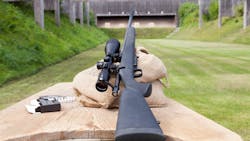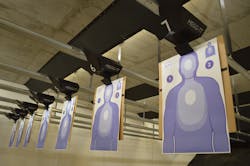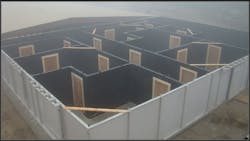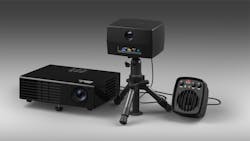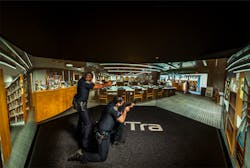The Variety of Range Design
Every law enforcement officer is familiar with firearms qualifications. Depending on your department, you’ll either find yourself standing in the freezing cold, blistering heat, harsh winds, or pleasant air conditioning, firing round after round with pistols, shotguns, and rifles, in order to meet state standards. Love it or hate it, range day is inevitable. It is up to the individual officer how they choose to use the time. Some sharpen their fundamentals and marksmanship, making every round as accurate as possible, while some simply aim to keep all rounds on target. Others choose to take it as a day away from patrol and a chance to catch up with their fellow officers while maintaining necessary training, and of course, as with any department mandated activity, there’s always the few who just don’t want to be there. Regardless of individual take away, there is a purpose for this training. At any given moment members of law enforcement may find themselves in a life or death situation which necessitates the judicious use of a firearm. It is a cruel luck of the draw, but there is no way to predict exactly when or how the most serious situations will occur, which is why it is crucial to always be ready. Each agency must ensure its officers have access to the best training possible, and luckily industry innovation is filling in the budgetary gaps.
Range design needs vary greatly depending on agency needs. A 25-man department will likely be able to meet all their needs with a 100-yard range and a handful of target stands, while a larger agency with several hundred or even thousand officers and specialty teams such as SWAT will need a far larger facility and greater distance to allow for sniper and other special weapons training. Agencies must consider whether their officers would benefit more from an indoor range or an outdoor range, and the associated costs. For an outdoor range, a wide-open area with a dirt berm, marked yardage, and static targets may suffice, with more sophisticated remote target systems available. For an indoor range, the designer would likely want separate shooting stalls, target retrieval systems, sound baffling, and bullet traps. Other considerations include versatility needs. Will the range be solely for target shooting, or for shoot-on-the-move courses as well? Can modern solutions such as digital ranges replace or refurbish older facilities without the major cost of an overhaul? In any case, it is important to consider ventilation and brass removal to mitigate lead exposure. A safe, clean shooting range is paramount for all training purposes.
Arguably, the most important aspect of shooting, be it training or genuine threat response, is to know your target. There are plenty of different paper targets available, however, the target system plays a large part in the efficiency of training. In an indoor range, a motorized retrieval system can increase the ease and speed of courses, by allowing users to control the distance of the target, and quickly retrieve them for scoring.
Targets, traps, and systems
• The Target Retrieval Systems made by Shooting Range Industries offer motorized target retrieval either on a stainless steel trolley cable system, or a hard rail system for extra control. The targets are controlled by each shooter in their individual stall. These systems were designed to be inexpensive, installed quickly, and easily maintained with replaceable parts if a shooter happens to aim high. The hard rails come in 10 foot sections, allowing for quick changes when needed, and the trolley cable can be restrung in approximately 15 minutes. The Ready Range is a modular range that is completely enclosed and capable of being relocated when needed. It features one or two lanes with appropriate ventilation, bullet traps, and tremendous adaptability. It may be expanded from 40 to 500 feet and widened to allow 20 or more lanes.
• For a system that allows for additional versatility, look no further than the XWT Wireless Target Carrier by Meggitt Training Systems. The XWT is a battery operated, wireless, 360-degree rotating target operated by remote control. The target moves along a closed track which prevents debris buildup on the rack. One feature particularly beneficial to law enforcement is the red and blue flashing distraction lights integrated into the target to simulate emergency equipment in low light scenarios.
Michelle Henderson, Marketing Director for Meggitt Training Systems, says they offer everything from simulation training to teach marksmanship fundamentals and de-escalation judgmental scenarios, to live-fire indoor and outdoor shooting ranges with wireless target carriers and an array of bullet traps. “This culminates in dynamic, tactical training options such as re-configurable shoot houses, as well as indoor and outdoor ranges that can accommodate operational police vehicles and officers firing on the move.”
• Moving into the world of shooting outside of a stall, the Fulcrum Target System is a lightweight carrying case containing everything you need to quickly set up a motorized turn, pop up, or a swing-out target. The targets are battery operated and remote controlled allowing the operator to control an incredible 100 targets with a single remote. A motion sensor can be attached to the controllers and placed throughout the course allowing the shooter to engage automated targets while they navigate an area. These portable, weatherproof systems make it possible to quickly set up for regular qualifications, shoot or don’t shoot scenarios, and any other course the operator can imagine anywhere, anytime.
• Everyone knows bullets fly fast, travel far, and hit hard. A standard paper target won’t slow down a fired round, so there must be something behind the target to prevent over-penetration and keep rounds from moving beyond the range. Range Systems’ Encapsulator Bloc Trap uses a combination of their Dura-Bloc ballistic rubber blocks and Dura-Panel anti-ricochet tiles to encapsulate incoming rounds, and AR500 steel backing to ensure the rounds are stopped entirely while also reducing lead particles in the air and minimizing impact noise. This trap can be installed free standing or attached to existing walls and is rated for up to 7.62mm NATO rounds. Range Systems offers a multitude of push and pull brass collectors in varying widths to make cleanup even easier. These collectors use angled “fingers” akin to a porcupine’s quills to grip the rounds as they roll over, and the rounds are then combed out into a basket which is easy to detach and dump. In comparison to collecting brass by hand, this process will save time and prevent lead exposure, leaving more time for training.
• On the subject of lead exposure, indoor ranges especially can see high levels of lead and other contaminants in the air. In order to comply with OSHA standards, these contaminants must be regulated to prevent dangerous levels of exposure. Carey’s Small Arms Range Ventilation designs ventilation systems to purge these airborne hazards and bring in fresh outside air, creating a safer shooting environment. They personally guarantee their systems will meet the most stringent of standards, including those of OSHA, NIOSH, and more. Carey’s has been trusted by military, federal, and local departments, and their projects have been independently verified by third parties, making them an industry leader in range ventilation.
• Another highly adaptable shoot house option, Range Systems creates expandable structures using the same Dura-panel and Dura-bloc technology as their bullet traps, allowing for a highly flexible training environment. These shoot houses can be built with moving doors and walls, multiple levels, observation catwalks, and more. These options make it possible to train all day in the same facility, and never see the same scenario twice.
Immersive simulation
As technological advancements continue to bleed into the world of policing, it was only a matter of time firearms training took a leap into the future.
• MILO Range offers advanced simulators such as the MILO Range Classic, MILO Range Pro, and MILO Range Theater. These create realistic interactive environments and use of force scenarios to test trainee’s judgment and track their abilities with post-event feedback.
With all of these options and many more available to meet different needs and limitations, every agency should have no trouble offering advanced firearms training outside of their standard qualifications. A well-trained officer is an effective officer, and more importantly a safe officer.
About the Author
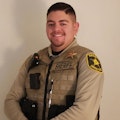
Officer Brendan Rodela, Contributing Editor
Brendan Rodela is a Sergeant for the Lincoln County (NM) Sheriff's Office. He holds a degree in Criminal Justice and is a certified instructor with specialized training in Domestic Violence and Interactions with Persons with Mental Impairments.
